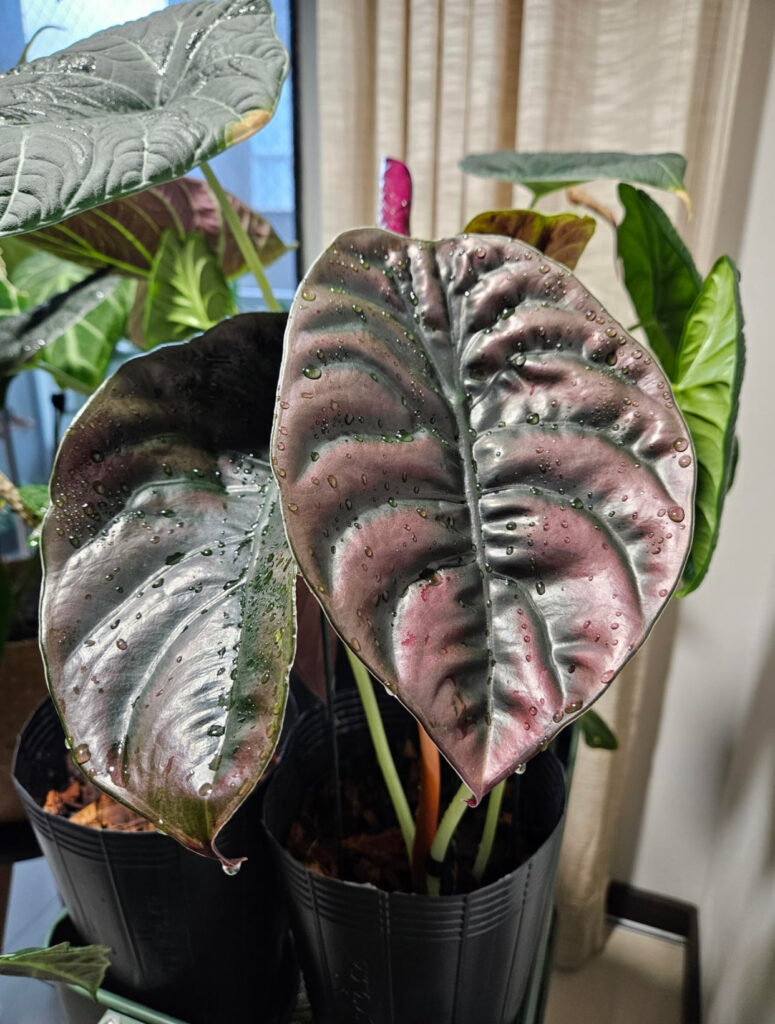Introduction: The Allure of Rare Monsteras (Monstera Obliqua vs Adansonii)
In the plant world, few genera have captivated collectors quite like Monstera. Known for their dramatic foliage and statement-making presence, Monstera species are the crown jewels of many indoor jungles.
Among the most talked-about—and often confused—are Monstera Obliqua and Monstera Adansonii. Both feature stunning fenestrated (holey) leaves and vining growth habits, but one is significantly rarer, more delicate, and more valuable than the other.
This guide breaks down the differences, clears up common myths, and shows you exactly what to look for when buying a Monstera Obliqua or distinguishing it from Adansonii.
Plus, we offer expert care tips, buying advice, and FAQs that cover everything new and seasoned collectors ask.
Why the Confusion Exists; Obliqua vs Adansonii
To the untrained eye, Monstera Obliqua and Adansonii may seem nearly identical. Both are climbing plants with perforated leaves. Both are tropical. Both have become Instagram favorites in recent years.
However, the similarities end there. The Monstera Obliqua is one of the rarest and most sought-after plants in the world, while Monstera Adansonii is widely available and affordable. The problem? Many sellers mislabel Adansonii as Obliqua, either unintentionally or for profit.
Buying the wrong plant not only affects your wallet but can also lead to disappointment if you’re expecting one plant and receive another. Let’s dig into the specific differences and how you can protect yourself as a buyer.
1. Leaf Texture, Shape & Fenestration
Monstera Obliqua:
- Texture: Ultra-thin, almost tissue-like leaves
- Fenestrations: Large, irregular holes that dominate the leaf—sometimes more hole than leaf
- Shape: Soft, rounded lobes with delicate structure

Monstera Adansonii:
- Texture: Leathery and thick, more rigid
- Fenestrations: Smaller, more symmetrical, fewer holes overall
- Shape: More elongated and narrow leaves
When viewed side by side, Obliqua appears ethereal and delicate, almost ghost-like. Adansonii, in contrast, looks much sturdier.

2. Growth Rate & Care Difficulty
Growth Rate:
- Obliqua: Extremely slow-growing. It may take months to produce a new leaf.
- Adansonii: Fast-growing, even indoors. Can quickly vine and fill trellises.
Care Level:
- Obliqua: High maintenance. Needs high humidity (80%+), consistent warmth, and filtered light. Sensitive to overwatering and prone to rot.
- Adansonii: Much more forgiving. Grows in a wide range of home environments and tolerates beginner care.
For those who like low-effort plants, Adansonii is a better choice. For collectors who want a true challenge and trophy plant, Obliqua is unmatched.
3. Rarity & Pricing
Monstera Obliqua:
- Rare in both the wild and cultivation
- Each cutting can cost anywhere from $300 to over $1,800 depending on source and size
- Often only available from specialty sellers or auctions
Monstera Adansonii:
- Available at most garden centers and plant stores
- Usually priced between $30 to $100
This massive price difference alone should be a red flag when browsing online plant listings.
4. Common Mislabels and Scams
Unfortunately, many buyers fall for mislabeled Adansonii sold as Obliqua—especially with terms like “Obliqua Peru” (which is not a true Obliqua).
Tips to Avoid Scams:
- Ask for close-up photos of the leaf and stem
- Request pictures of the mother plant
- Avoid sellers who don’t offer provenance
- Trust verified rare plant shops
Remember, a true Obliqua is hard to come by. If a deal looks too good to be true, it probably is.
5. True Monstera Obliqua identification
- Fragile Structure: Thin, lace-like leaves that require high humidity to stay intact
- Vining Behavior: Extremely slow and compact
- Origin Info: Most true Obliquas come from expert cultivators or botanical gardens
- Price: Always expensive. If it’s under $100, be cautious
Trusted sellers will often include care notes, photos, and plant passports. Transparency is key.
6. Complete Care Guide for Monstera Obliqua
If you’re lucky enough to get your hands on one, caring for a Monstera Obliqua is an art form. Here’s what it needs:
Light:
- Bright, indirect light
- Avoid harsh direct sunlight
Humidity:
- 80% and above
- Ideal with a humidifier or in a greenhouse cabinet
Watering:
- Keep soil slightly moist
- Do not let it dry completely, but avoid waterlogging
Potting Mix:
- Use an aroid mix with perlite, orchid bark, coco coir, and charcoal
Fertilizing:
- Light, monthly feeding during growing season
Support:
- Provide a moss pole or trellis for stability
7. Adansonii Care Tips (Great for Beginners)
Light:
- Bright to medium indirect light
Humidity:
- Thrives in average home humidity, but loves a boost
Watering:
- Water when the top inch of soil is dry
Potting Mix:
- Standard aroid soil works perfectly
Propagation:
- Easily propagated via stem cuttings in water or moss
Fast Buyer Questions
How do I know if it’s the real Obliqua?
Look for extremely thin leaves and massive fenestrations. Ask for parent plant photos and seller verification.
Is Monstera Obliqua worth the price?
Yes, for collectors seeking ultra-rare plants. No, if you’re looking for a low-maintenance houseplant.
Can Monstera Obliqua grow in normal household conditions?
It requires controlled humidity and warmth—best kept in a cabinet or greenhouse setup.
Why is Adansonii sold as Obliqua?
Because they look similar at a glance and Obliqua commands a higher price. Many sellers use the confusion to their advantage.
Can I propagate Obliqua?
Yes, but very slowly. Cuttings can take months to root and grow.
Real Collector Testimonials
“I thought I had a Monstera Obliqua for two years. It turns out it was an Adansonii. I only realized when I visited a botanical garden and saw the real thing. Huge difference!”
“Buying a true Obliqua was a game-changer for my collection. It’s a challenging plant, but nothing compares to its delicate beauty.”
Final Thoughts: Make Informed Choices
Knowing the difference between Monstera Obliqua and Adansonii can save you hundreds and help you make smart collecting decisions. If you’re investing in rare plants, always research your seller, inspect leaf structure, and don’t let the hype mislead you.
Ready to Shop Real Rare Monsteras?
At Variegated Plant Shop, we stock verified rare Monstera plants from trusted growers. Every listing is transparent, and every plant is hand-selected for quality.
Shop rare Monsteras now before they’re gone!


